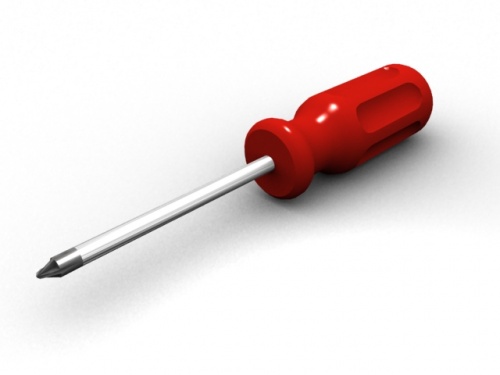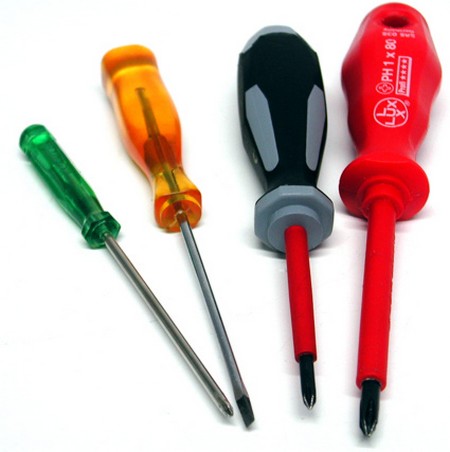An ordinary screwdriver has a plastic or wooden handle fixed permanently to a steel blade which has its end shaped to fit into a slotted or cross-head screw. Ordinary screwdrivers can be difficult to use one-handed and can cause blisters. With a ratchet screwdriver you do not need to release your grip on its handle when using it – it has a ratchet mechanism which can be adjusted to screw up, to unscrew, or can be locked so that the screwdriver acts like an ordinary one. A spiral ratchet screwdriver allows you to drive in screws by just pumping on the handle. Most come with a selection of interchangeable blades. These two ratchet screwdrivers should be easier on the hands than an ordinary one. A spiral ratchet may save time when you have a lot of screws to put in but do not expect to get the screws in as tightly as you would with an ordinary screwdriver. A 400mm-long spiral ratchet should drive 12-gauge 2in screws into softwood and 10-gauge 1′ in screws into beech. A ratchet screwdriver saves little time.

If you want a Pozidriv screwdriver, make sure that it is marked as such – it may say Pozidriv on its shaft and should be marked with its point size too. The most common No 2 fits screw gauges 5 to 10; No 1 fits smaller screws – gauges 1 to 4; and No 3 fits larger screws gauges over 10. With unmarked cross-head screwdrivers it is best to assume that they are designed to fit Phillips cross-head screws though most work well with Pozidriv and Supadriv screws too.
Slotted screwdrivers are very unlikely to carry any useful size marking on them. And as there is such a wide range of screw slot sizes, it is quite likely that even with a collection of four slotted screwdrivers with blade widths of 2.5mm (electrician’s), 4.5mm, 6.5mm and 9.5mm, you will still come across screws where the screwdriver tip fits so sloppily in the screw slot that it rides out of the slot when you apply large turning forces. So, if you have a particular size of slotted screw that you prefer to use (or intend to use extensively), take one of the screws to the shop and select a screwdriver with a tip that fits well. Check the condition of the point as well – make sure that it has clean sharp corners and has been cut squarely to the shaft. Where you have a choice, choose the screwdriver with the thickest blade.
You can improve the point of a new screwdriver and retrieve even a badly damaged one with a grindstone. Try to get the end and the faces fiat with a good sharp corner between the end and each face. Take care when using a powered grindstone – if the metal gets too hot, the blade will lose its temper and the point will then be too soft. Wear goggles to protect your eyes.

Handle shapes fall into three categories cabinet, engineer’s and shapes specially designed by individual screwdriver manufacturers. The handle shape, its size, and what it is made of all affect how tightly the screw can be turned. For most woodworking, larger handles are best – they let you apply most torque and are generally most comfortable. If you are likely to use the screwdriver when your hands are greasy – when repairing the car, say – then a plastic fluted engineer’s screwdriver should be easy to wipe clean afterwards.
Many electric drills can be used for driving screws, especially if fitted with torque control; there are also special cordless screwdrivers with a selection of screwdriving bits.